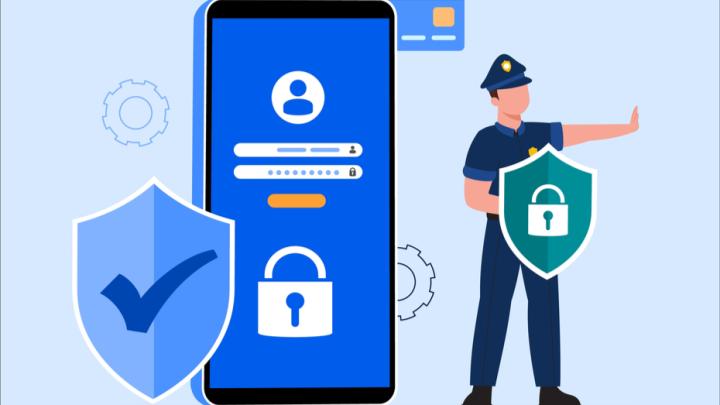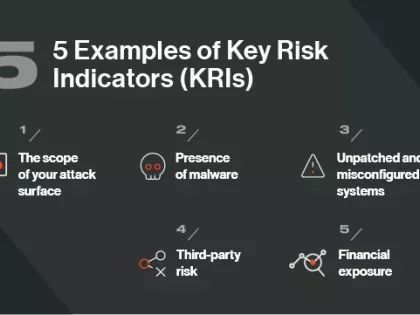Cyber Risk Mitigation vs. Remediation: How to Optimize Both

Oftentimes, cyber risk mitigation and remediation are talked about in the same terms. But they are two distinct cyber risk management strategies.You need to optimize both to take a multi-layered and more effective approach to cybersecurity.
Let’s take a closer look at what these terms mean and why focusing your efforts on both is an effective cyber risk management strategy.
Cyber risk remediation vs. mitigation
Risk Remediation
Risk remediation is the act of preventing an identified vulnerability – such as an unpatched system or misconfigured software – from becoming a security threat. To remediate a threat, security teams will come together to determine the right course of action, such as applying a patch or enforcing the right configuration management policies. Risk remediation strategies stop an event in its tracks, before it enters your system and has the chance to do any damage.
Risk Mitigation
Risk mitigation, on the other hand, involves taking steps to reduce the risk of threats instead of eliminating and remediating the threat altogether. These actions include shortening its duration, keeping it from spreading across the network, minimizing the amount of data that gets stolen, and so forth. A mitigation strategy could include disabling the system or using network segmentation to isolate it from malicious actors.
How to measure & improve risk remediation and mitigation
Despite the best efforts of your security teams, risk remediation and mitigation are often hampered by an incomplete view of security performance. Many organizations don’t have a clear picture of what systems, devices, and users are on their networks at any time and do not have a way to efficiently identify, measure, and continuously monitor their risk profiles.
The problem is compounded by digital transformation. As your organization’s digital footprint grows, identifying vulnerable systems and assets – on-premises, in the cloud, and across business units, geographies, remote locations, and third parties – isn’t easy. This means that your business may be “flying blind” through current threats and vulnerabilities. Short of adding more security staff, what are your options to measure and improve mitigation and remediation efforts?
Here are four best practices to consider:
1. Understand your organization’s attack surface
Your digital footprint is a complex environment that includes cloud service providers, shadow IT, and remote work devices, making it hard to identify vulnerabilities. This makes it tough to prioritize areas for risk remediation. Mitigation can also be challenging, as it can be difficult to identify where problems may originate.
Instead of undertaking a time-consuming inventory and manual risk assessment of your IT infrastructure, use an attack surface analytics tool to discover the location of your digital assets quickly and automatically. You’ll gain visibility into each asset, where it resides, and the corresponding cyber risk associated with the asset. After all, you can’t secure what you can’t see. You can even discover shadow IT and visualize areas of disproportionate risk – such as an insecure port that exposes sensitive data to the bad guys.
2. Continuously monitor for emerging risk
When your security team identifies a cyber risk, rapid remediation and/or mitigation should follow. But with hundreds of alerts coming at them each day, many of which prove to be false negatives, real risk may fall through the cracks. If that happens, you won’t be able to mitigate risk to the extent necessary to minimize damage.
Automating security processes can help teams take a more proactive approach to cyber risk mitigation. For instance, instead of responding to every alert in the same manner, you could use a solution like Bitsight for Security Performance Management (SPM) to identify, measure, and mitigate risk in a timely manner and then measure performance over time.
But it’s not just about mitigation. Bitsight SPM automatically and continuously provides insight into the vulnerabilities facing your organization – such as unpatched systems, misconfigured software, open access ports, and compromised systems – so you can identify areas of weakness and remediate them quickly, taking action against possible threats before they become real problems.
3. Model risk scenarios and paths to remediation
Security leaders learn from past incidents, but what if you could also predict future security performance so that you can identify the right course of action for mitigation and remediation?
Bitsight Forecasting can help. You can model different scenarios and paths of remediation to project future security performance. You can also get answers to difficult yet critical questions about where to spend security budgets, what sets of activities will help reduce risk most quickly, and whether technology implementations should be changed. Armed with this information, you can make informed decisions about the strategy and resources needed to improve your security posture.
4. Address supply chain risk
Once your internal risk management programs are underway, you should also move quickly to address IT risks associated with the plethora of third-party vendors that interact with your business operations and data.
Use Bitsight for Third Party Risk Management to continuously monitor the security postures of your vendors – from onboarding through the term of the relationship. With Bitsight you can move beyond the limitations of point-in-time security assessments and audits and gain a near real-time view of emerging risk in your supply chain. You can also share these findings with your vendors – making vendor risk management and mitigation a more collaborative process.
Better intelligence equals better risk remediation & mitigation
By leveraging Bitsight through this type of phased approach, your organization can accomplish several goals. First, you can improve risk identification and management processes across your expanding digital environment. Second, you can gain an unprecedented forward-looking view into security performance to better inform mitigation strategy and resources allocation. Finally, you can streamline remediation and mitigation efforts through automatic and continuous risk measurement and monitoring – across your enterprise and its supply chain.


